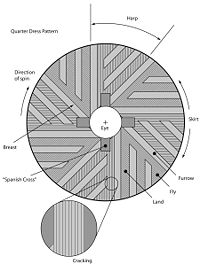
Photo from wikipedia
Research on the manufacture, use, and use-wear of grinding stones (including slabs and mullers) can provide a wealth of information on ancient subsistence strategy and plant food utilization. Ancient residues… Click to show full abstract
Research on the manufacture, use, and use-wear of grinding stones (including slabs and mullers) can provide a wealth of information on ancient subsistence strategy and plant food utilization. Ancient residues extracted from stone tools frequently exhibit damage from processing methods, and modern experiments can replicate these morphological changes so that they can be better understood. Here, experiments have been undertaken to dehusk and grind grass grain using stone artifacts. To replicate ancient activities in northern China, we used modern stone tools to dehusk and grind twelve cultivars of foxtail millet (Setaria italica), two cultivars of broomcorn millet (Panicum miliaceum) and three varieties of green bristlegrass (Setaira viridis). The residues from both used and unused facets of the stone tools were then extracted, and the starch grains studied for morphological features and changes from the native states. The results show that (1) Dehusking did not significantly change the size and morphology of millet starch grains; (2) After grinding, the size of millet starch grains increases up to 1.2 times larger than native grains, and a quarter of the ground millet starch grains bore surface damage and also exhibited distortion of the extinction cross. This indicator will be of significance in improving the application of starch grains to research in the functional inference of grinding stone tools, but we are unable to yet distinguish dehusked forms from native.
Journal Title: Scientific Reports
Year Published: 2019
Link to full text (if available)
Share on Social Media: Sign Up to like & get
recommendations!